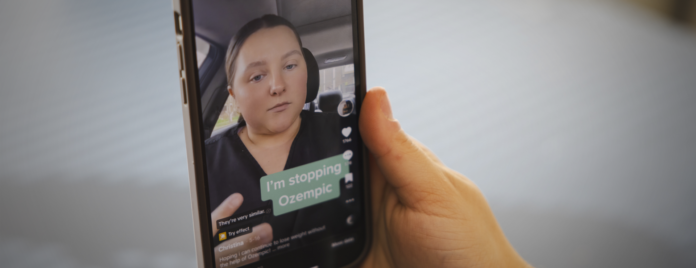The Food and Drug Administration is doing little to cut down on misleading drug claims on social media despite having the power to oversee prescription drug marketing, an examination of agency records shows.
For decades the FDA has regulated advertising on television, radio, and in magazines. It released guidelines for social media in 2014.Since then it’s done little to regulate influencers who may or may not have direct ties to the manufacturers, yet tout their success with medications such as Novo Nordisk A/S’s diabetes medication Ozempic and Pfizer Inc.‘s migraine drug Nurtec ODT to millions of followers.
Medical mis/disinformation from social media can place tremendous strain on the healthcare system, leading to dangerous, and often aggressively pursued, consumer decisions about health care,” said Gary Kreps, director of the Center for Health and Risk Communication at George Mason University.
Pharmaceutical companies, paid social media influencers, and telehealth companies that sell the drugs are required to balance promotional information with warnings about side effects in social media ads, similar to the lengthy, FDA-mandated warnings in television and magazine ads. But in practice, Bloomberg Law found, social media ads often contain limited to no warnings.
Investigations by Bloomberg Law have shown how the agency has slow-rolled guidance on cutting down the presence of heavy metals in baby food, and ceded much of its oversight of food additives in commercial products to the industry itself. The lack of focus on social media marketing shows that similar problems arise in drug oversight as well.
Commissioner Robert M. Califf has called health misinformation a leading cause of death in the US, and has said combating these falsehoods is one of his top priorities.
“The FDA is strongly committed to protecting public health by helping to ensure that prescription drug promotional communications issued by or on behalf of a drug manufacturer, packer, or distributor are truthful, balanced and accurately communicated,” agency spokesperson Carly Pflaum said in an emailed statement.
Out of the 40 publicly available letters the FDA’s prescription drug office has sent since 2017 notifying pharmaceutical companies of ad violations or questionable promotional activities, only seven dealt with sponsored posts on platforms including Facebook, Instagram, and YouTube.None mention TikTok, the social media platform that has 150 million active users a month in the US, which didn’t exist when the FDA’s most recent guidelines were written. The hashtag #prescriptiondrugs has 5.8 million views on the site. People have viewed content with #medicine there more than 33 billion times.
Some of those posts have led others to start taking medications only to later wish they’d looked into the drug’s side effects more.
Christina Salagea got her information about Ozempic from TikTok before she started taking it.
“I saw how women were losing weight, feeling great, and eating less without severe side effects,” Salagea said in an interview.
Christina Salagea, 30, became interested in Ozempic after watching influencers on the platform promote the diabetes drug widely used for weight loss. Photographer: Taylor Glascock/BloombergWhen the 30-year-old office manager and medical assistant started taking the drug, however, her experience was far from those the influencers portrayed. During six weeks on Ozempic, a trip to the bathroom took 20 minutes and caused bleeding and lingering pain that made sitting difficult. Bowel movements grew less frequent, just once or twice a week.
The influencer posts didn’t include warnings about how severe and long-lasting the side effects could be, Salagea said; the videos said side effects such as nausea would subside and pushing through would be worth it in the end.
Salagea stopped taking Ozempic after losing 22 pounds.
“I should have done more research,” she said.
Novo Nordisk said it does “not currently work with any influencers to share their experience” with Ozempic or Wegovy—the version of the drug specifically indicated for weight loss—through influencers’ “personal social media channels.”
“Any social media content sponsored by Novo Nordisk is identified and labeled as such,” the company said in an email.
Out of the 40 warning and untitled letters dated since 2017 in the FDA’s public database, 11 were in response to complaints submitted to the Bad Ad Program. These include the post about Afrezza, a sponsored Google link for a controlled substance with a high potential for abuse, and a television and YouTube ad for Nurtec ODT featuring Khloé Kardashian.
The FDA only provided the number of Bad Ad complaints it received each year, and not copies of the complaints themselves or which prescription drugs they addressed.
The FDA’s draft social media guidance from nearly a decade ago, which was never finalized, suggests pharmaceutical companies correct online misinformation related to their products by commenting on the posted content, or directly contacting the individual or entity behind it. But the agency can’t legally require manufacturers to do so.
And it tells companies promoting prescription drugs or medical devices on platforms with character-space limitations, like X, formerly known as Twitter, to “present a fair balance” of information on a product’s benefits and risks.
Instead of focusing on specific platforms, the FDA said its approach to policy development has been on developing recommendations that have long-term applicability.
Author: Stephanie Beasley
